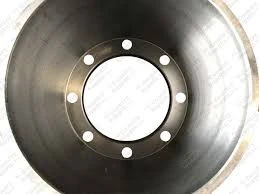
-
 Afrikaans
Afrikaans -
 Albanian
Albanian -
 Amharic
Amharic -
 Arabic
Arabic -
 Armenian
Armenian -
 Azerbaijani
Azerbaijani -
 Basque
Basque -
 Belarusian
Belarusian -
 Bengali
Bengali -
 Bosnian
Bosnian -
 Bulgarian
Bulgarian -
 Catalan
Catalan -
 Cebuano
Cebuano -
 Corsican
Corsican -
 Croatian
Croatian -
 Czech
Czech -
 Danish
Danish -
 Dutch
Dutch -
 English
English -
 Esperanto
Esperanto -
 Estonian
Estonian -
 Finnish
Finnish -
 French
French -
 Frisian
Frisian -
 Galician
Galician -
 Georgian
Georgian -
 German
German -
 Greek
Greek -
 Gujarati
Gujarati -
 Haitian Creole
Haitian Creole -
 hausa
hausa -
 hawaiian
hawaiian -
 Hebrew
Hebrew -
 Hindi
Hindi -
 Miao
Miao -
 Hungarian
Hungarian -
 Icelandic
Icelandic -
 igbo
igbo -
 Indonesian
Indonesian -
 irish
irish -
 Italian
Italian -
 Japanese
Japanese -
 Javanese
Javanese -
 Kannada
Kannada -
 kazakh
kazakh -
 Khmer
Khmer -
 Rwandese
Rwandese -
 Korean
Korean -
 Kurdish
Kurdish -
 Kyrgyz
Kyrgyz -
 Lao
Lao -
 Latin
Latin -
 Latvian
Latvian -
 Lithuanian
Lithuanian -
 Luxembourgish
Luxembourgish -
 Macedonian
Macedonian -
 Malgashi
Malgashi -
 Malay
Malay -
 Malayalam
Malayalam -
 Maltese
Maltese -
 Maori
Maori -
 Marathi
Marathi -
 Mongolian
Mongolian -
 Myanmar
Myanmar -
 Nepali
Nepali -
 Norwegian
Norwegian -
 Norwegian
Norwegian -
 Occitan
Occitan -
 Pashto
Pashto -
 Persian
Persian -
 Polish
Polish -
 Portuguese
Portuguese -
 Punjabi
Punjabi -
 Romanian
Romanian -
 Russian
Russian -
 Samoan
Samoan -
 Scottish Gaelic
Scottish Gaelic -
 Serbian
Serbian -
 Sesotho
Sesotho -
 Shona
Shona -
 Sindhi
Sindhi -
 Sinhala
Sinhala -
 Slovak
Slovak -
 Slovenian
Slovenian -
 Somali
Somali -
 Spanish
Spanish -
 Sundanese
Sundanese -
 Swahili
Swahili -
 Swedish
Swedish -
 Tagalog
Tagalog -
 Tajik
Tajik -
 Tamil
Tamil -
 Tatar
Tatar -
 Telugu
Telugu -
 Thai
Thai -
 Turkish
Turkish -
 Turkmen
Turkmen -
 Ukrainian
Ukrainian -
 Urdu
Urdu -
 Uighur
Uighur -
 Uzbek
Uzbek -
 Vietnamese
Vietnamese -
 Welsh
Welsh -
 Bantu
Bantu -
 Yiddish
Yiddish -
 Yoruba
Yoruba -
 Zulu
Zulu
Understanding the Components and Function of Drum Brake Housing in Vehicles
Understanding Drum Brake Housing Function and Importance
Drum brake systems are a critical component of many vehicles, widely utilized in older models and still prevalent in certain designs, particularly in the rear brake assembly of trucks and SUVs. The drum brake housing plays a vital role in this braking system. In this article, we will explore the function, design, and significance of the drum brake housing within automotive engineering.
What is Drum Brake Housing?
The drum brake housing is the outer casing of the drum brake assembly. It is typically made from cast iron or steel, designed to withstand the tremendous forces and temperatures encountered during braking. This component encases the braking mechanism, which consists of the brake drum, shoes, springs, and other necessary parts. When the brake pedal is engaged, hydraulic pressure forces the brake shoes against the inner surface of the rotating drum, generating friction that slows down or stops the vehicle.
Design and Functionality
The design of the drum brake housing is integral for both safety and performance. The housing must be robust enough to handle the heat generated from prolonged braking and provide stability to the entire braking system. It also serves to shield the internal components from debris and moisture, which could adversely affect braking efficiency.
One key feature of the drum brake housing is its ability to dissipate heat. During braking, friction generates heat, which can lead to brake fade—a reduction in stopping power due to overheating. The housing is often designed with ventilation features, allowing air circulation to cool the drum effectively. This cooling is crucial, especially in heavy-use scenarios like towing or hilly terrain driving, where brakes are frequently engaged.
drum brake housing

Importance of the Drum Brake Housing
The drum brake housing is essential for overall vehicle safety. A well-designed and properly functioning housing contributes to reliable braking performance, which is paramount for preventing accidents. Additionally, the durability of the housing directly impacts maintenance costs. A housing that corrodes or wears out prematurely can lead to component failure, resulting in costly repairs. Regular inspections can help ensure that the drum brake housing remains in good condition and that any potential issues are addressed before they escalate.
Replacement and Maintenance
Over time, the drum brake housing may experience wear due to corrosion, thermal stress, and mechanical fatigue. Signs that the housing may need replacement include visible cracks, excessive rust, or deformation. Regular maintenance of the brake components, including inspecting the drum brake housing, is crucial for safe vehicle operation.
Replacing a damaged drum brake housing requires careful consideration. In addition to ensuring that the new housing is compatible with the existing brake system, technicians must also assess the condition of the brake shoes, springs, and drums to ensure the system's overall effectiveness.
Conclusion
In conclusion, the drum brake housing is more than just a protective cover; it is a key structural element that contributes to the efficiency and safety of the braking system. Understanding its function, design, and importance can help vehicle owners appreciate the significance of regular maintenance and timely replacements. As vehicles continue to evolve, the drum brake housing remains a crucial part of many braking systems, ensuring that drivers can depend on their vehicle's stopping power under a variety of conditions. Emphasizing its role underscores the importance of mechanical integrity in automotive engineering.
-
Rear Drum Brakes Maintenance TipsNewsAug.04,2025
-
Key Components Affecting Brake Drum FunctionNewsAug.04,2025
-
Important Inspection for Truck Drum BrakeNewsAug.04,2025
-
How to Prepare for Changing Rear Drum BrakesNewsAug.04,2025
-
Essential Tools for Cleaning Drum Brakes ProperlyNewsAug.04,2025
-
Brake Drum Function GuideNewsAug.04,2025
-
Safety Features of Red Brake DrumsNewsAug.01,2025
